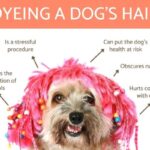In recent years, the public’s interest in ethical consumerism has surged, leading to increased scrutiny of the practices of major cosmetic brands, including NIVEA. The question of whether NIVEA is truly cruelty-free or a participant in the pervasive animal testing chain is multifaceted. To navigate this complex issue, it is crucial to unpack the various dimensions of animal testing, the company’s policies, and the broader implications for consumers seeking humane alternatives.
Animal testing in the cosmetics industry encompasses a variety of practices, often deemed necessary for safety assessments of products. Traditionally, these procedures involve the administration of substances to animals, frequently resulting in significant suffering and distress. This method raises ethical concerns, particularly considering the advancements in alternative testing methods that do not involve animals. Such innovations, including in vitro assays and computer modeling, provide reliable safety data while sparing animals from discomfort.
NIVEA, a brand under the Beiersdorf umbrella, has fostered an image of compassion and care; however, an examination of its practices reveals a more intricate narrative. The company claims to adhere to a no-animal-testing policy for its own products. Yet, the reality is more ambiguous when factoring in the global regulatory landscape. In regions such as China, where animal testing is mandated by law for imported cosmetics, the dilemma intensifies. Many consumers are left questioning whether the company’s dedication to cruelty-free standards can genuinely coexist with its operations in markets that require animal testing.
The dichotomy between independent ethics and regulatory requirements poses significant challenges for many companies. In the case of NIVEA, while they advocate for humane practices and have implemented measures to reduce or eliminate animal testing, the sale of their products in regions that enforce such testing raises a red flag. This juxtaposition of proclaimed cruelty-free intentions against compliance with legislation prevalent in certain markets creates cognitive dissonance for ethical consumers.
Furthermore, understanding the various types of animal testing is essential to grasp the full scope of this issue. The two primary forms of testing include acute toxicity tests, assessing immediate harm, and chronic toxicity tests, evaluating prolonged exposure impacts. Other less common practices, such as skin and eye irritancy tests, delve into the specific effects of topical applications. Such tests highlight the suffering inflicted upon test subjects, whom are often rodents and rabbits, emphasizing the urgent need for alternatives.
In exploring the implications of supporting a brand caught in the crossfire of regulatory obligations, consumers must consider the ultimate impact of their purchasing choices. For many, it may not merely be about the efficacy of NIVEA’s products but rather the broader ethical implications that resonate deeply. This sentiment is reflective of a growing trend wherein consumers are not only seeking high-quality products but are also expressing a commitment to animal welfare through their choices.
The movement toward transparency within the beauty industry reflects a burgeoning demand for accountability. Brands are increasingly being held liable for their commitments to animal welfare, and the pressure to provide verifiable proof of cruelty-free practices is mounting. This includes a demand for detailed disclosures regarding their supply chains, testing methodologies, and adherence to international standards. As such, NIVEA must engage with these challenges proactively, evolving its policies to align more closely with the expectations of today’s conscientious consumers.
Moreover, the conversation surrounding cruelty-free labeling deserves focused attention. Many brands tout certification from organizations like Leaping Bunny or PETA as endorsements of their ethical standing. However, consumers must scrutinize the specifics of these certifications. Some companies may exploit loopholes to achieve certification while still maintaining questionable practices at various stages of production or distribution. Therefore, thorough research into a brand’s claims, as well as any documented evidence supporting those claims, is paramount for ethically-minded consumers.
In light of this intricate landscape, the question remains: is NIVEA truly cruelty-free, or is it part of a testing chain that undermines its ethical commitments? The answer requires an astute analysis of not only their public stances but also the legislative frameworks that influence their operational decisions. The obligation to engage in transparent dialogue and to adapt practices that resonate with the philosophy of animal welfare cannot be overstated.
Ultimately, for those individuals seeking to make conscious choices, it is essential to prioritize transparency and integrity in the brands they support. As awareness continues to grow, so too does the collective strength in lobbying for change. This movement can inspire brands like NIVEA to transcend regulatory compliance, championing a future where cruelty-free practices are the norm, rather than the exception. In crafting a more humane world, consumers wield significant power — and their choices can drive the necessary change within the beauty industry.
In conclusion, while NIVEA may endeavor to position itself as a champion of ethical beauty, the intricacies of its animal testing policies compel consumers to scrutinize its practices closely. Whether the brand will evolve its operations in alignment with evolving consumer sentiments remains an open question. Nonetheless, the pursuit of cruelty-free cosmetics beckons a unified responsibility for companies to adopt practices that honor the ethical standards that compassionate consumers demand.









